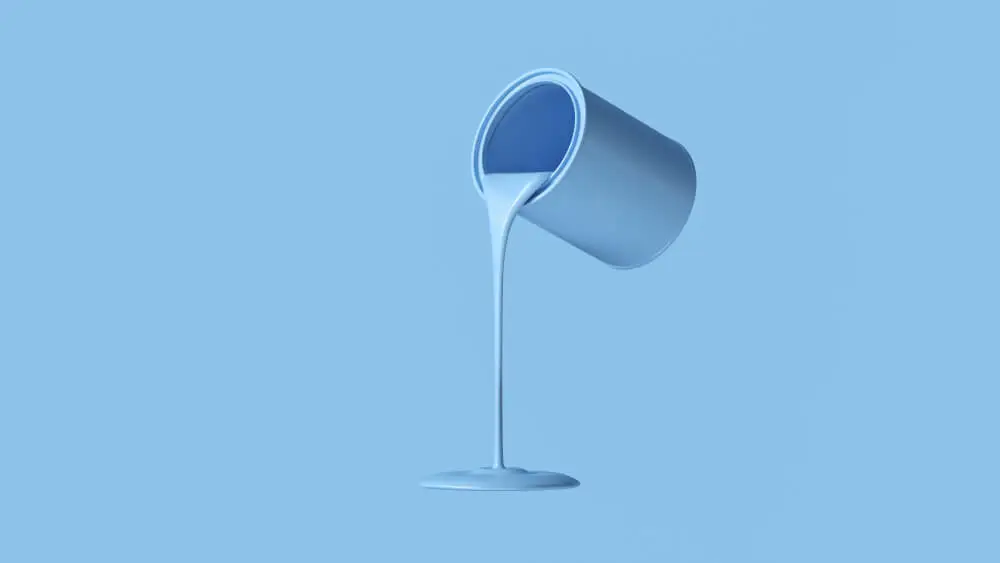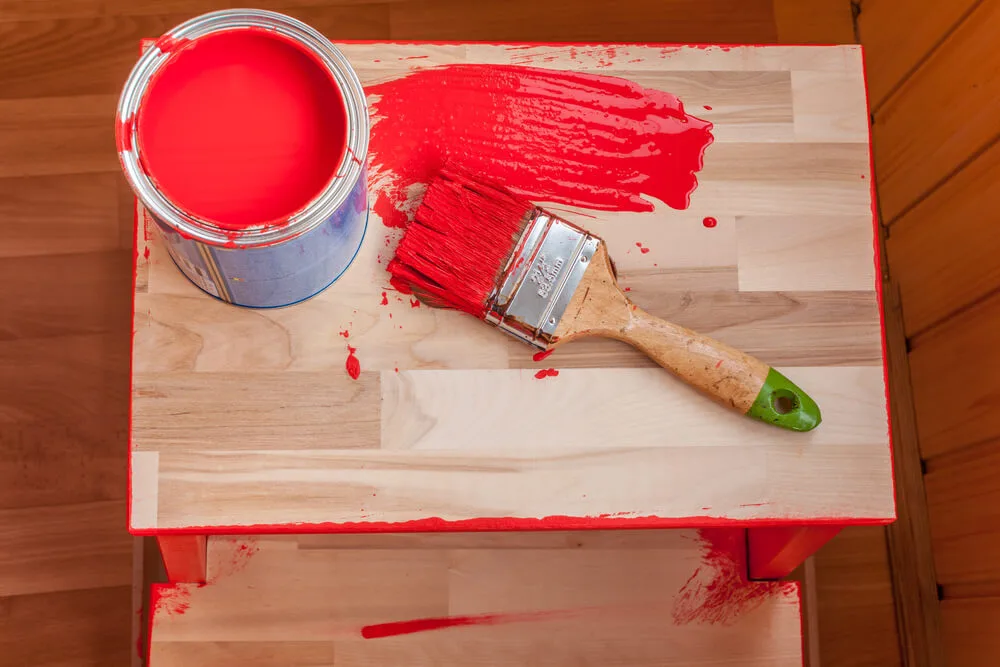Acrylic Vs Latex Paint 2024 – Difference You Need to Know
People worry about whether they should buy acrylic paint or latex paint. They want to purchase acrylic and latex paint but don’t know which paint type is best based on the project category and the paint quality. Both of these paints are good to use for different projects, including crafting. Still, acrylic vs latex paint is a debate among professional painters.

Talking about the difference between latex and acrylic paint is easy once you know their composition and durability level. Down in this post, I provided some.
What is the difference between Acrylic and Latex paint in detail?
Acrylic Paint
It is a chemical and acrylic resin-based paint, which is durable and highly resistant to water. All the chemicals in latex paint are also available in acrylic paint; however, it has more chemicals and other substances than latex paint. For example, it has a high composition of water-based solvents, acrylic resins, and silicon oil, including many other substances.

Acrylic paint is more water resistant and has the highest electric power. They have a medium level of volatile organic compounds, which can create a foul smell when you apply them on different surfaces. Additionally, they can release extra chemicals as compared to latex paints.
It has some amount of silicon oils which helps to enhance the durability of the painted surface and paint itself.
Latex Paint
It is water-based with the same type of acrylic paint, but it’s quick to dry and hence has low consistency. It is easy to wash off from the surface; therefore, you don’t need to wait for a long process while you want to repaint an exterior.

When I talk about its composition, it consists of resins, pigments, and water-based compounds. Due to resins and their derivatives, their elasticity is high, and they look shiny. It has a low volatile organic compounds composition, making it suitable specifically for interior houses.
The drying process is only one hour, and you can repaint the surface after waiting for 2 hours.
Video Latex Paint Tips for Beginners:
Acrylic Vs Latex Paint
Still wondering if acrylic paint is the same as latex? The answer is No; both have their pros, cons, and features.
| Features | Acrylic Paint | Latex Paint |
|---|---|---|
| Paint Adhesion | Excellent | Good |
| Durability | Excellent | Good |
| Useful for | Exterior surfaces | Interior surfaces |
| Ease of use | Good | Excellent |
| Toxicity | High | Low |
| Cost | High | Low |
| Dry time | Short | Low |
| Mildew resistant | High | Moderate |
| Elasticity | High | Moderate |
| Weather resistant | High | Low |
| Coverage | Good | Excellent |
| UV Rays Resistant | High | Moderate |
| Availability | Moderate | High |
Factors that make Acrylic and latex paint different from each other
1) Paint Composition
Acrylic paint has a high composition of silicon-based oils and VOC chemicals. Due to these compounds, their durability time is increased. They have more chemicals than latex paint, are resistant to water, and have harsh environmental conditions. These are useful for exterior usage.
Latex paint has a medium level of VOCs; hence, the drying process is very short. These are not very durable and are helpful for interior usage.
2) Paint Adhesion
Paint adhesion is one of the essential points used to differentiate between acrylic paint and latex paint. Acrylic paint has more adhesion ability and can adhere to different surfaces, including wood, metals, walls, and footpaths. Due to its extraordinary adhesion ability.
In my experience, latex paint has less ability to adhere to multiple types of surfaces. Moreover, its drying time is short; hence, it can quickly peel off from the surface once thoroughly dried. Therefore, latex paint is used for interior design where the surface remains safe from harsh environmental conditions. Due to its less adhesion ability, it has less durability than acrylic paint.
3) Durability Power
Although acrylic and latex paint is durable enough, acrylic paint has more durability than latex paint. The reason is that acrylic paint has more chemicals and substances, which makes it durable. It has a high amount of silicon oil and plasticizers, including resins.
Due to all these chemicals, the paint remains sticky to the surface, and you don’t need to repaint the surface after weeks and months. Hence, acrylic paint is helpful for exterior design and characters.
Latex paint is less durable when compared to acrylic paint. It is made of substances high in VOCs, making the overall valuable paint for low-traffic areas, including room decorations or other interior design ideas. It’s easy to wash and wear off once dried thoroughly.
Note: all you need to check is whether you are using paint for interior or exterior usage. For the prior one, I recommend using latex paint, and for the latter, I recommend using acrylic paint.4) Weather Resistant Powers
As I mentioned above, acrylic paint has more chemical composition, making it weather-resistant. It can easily withstand weather conditions, including heavy moisture and heavy rainfall.
On the other hand, latex paint is not much water resistant. It’s water soluble, so you need to take care when it comes to knowing about the weather conditions. The best way is to use latex paint for the internal surfaces and interior design for long-term results. Avoid this paint from getting into the water for glossy results.
Also, acrylic paint can face and bear UV rays from sunlight and other vehicles. It can also withstand other environmental chemicals as compared to latex paint. At the same time, latex paint needs attention when you apply it to exterior surfaces.
5) Coverage
It’s all about how much area can be covered by paint when applied to the surface. Latex paint has more coverage than acrylic paint. Latex paint has more coverage than acrylic paint. Must apply the primer before the latex paint for better coverage, while acrylic paint doesn’t need primer.
If you wish to paint small-scale regions for a specific time, then acrylic paint is an excellent choice; however, for large coverage areas, you need to buy latex paint due to its extraordinary coverage ability.
6) Longevity
Acrylic paint has greater longevity power due to its durability and the chemicals that enhance its lifespan. This paint never fades up quickly; hence, it’s a good choice for exterior areas where traffic and human living are high comparatively.
Latex paint has less longevity power, so I don’t recommend it in high-traffic areas for painting. Again you can use it for the exterior design or for the areas where the traffic is meager, or the surface doesn’t face harsh environmental conditions.
7) Ease of Use
Both of these paints are easy to use. However, when it comes to saving time and energy, latex paint is easy.
Latex paint is easy to apply on any surface due to its coverage ability, and you don’t need to use a dryer because its drying time is long enough. Latex paint is water soluble, so its thinner surface works pretty well.
On the other hand, acrylic paint requires more time and effort to put in. It’s thick, so one should know the terms and conditions while applying it to avoid fading and color-peeling issues. Moreover, you must wait to dry the first paint layer if you want to apply the second coat of the same paint. Here you can use a dryer; hence, higher cost and energy are required.
8) Cost and Availability
Both of these paints are affordable enough to buy easily for everyone. Latex paint is less costly and is widely available at every doorstep of the market shop. Its quality is high everywhere.
However, acrylic paint is not readily or easily available, and you need to look at the quality. If you want to buy a highly durable acrylic paint, then it will cost more than the cost of latex paint.
The reasons are that all latex paints come in high-quality forms while acrylic paints have more brands, and hence quality differs.
9) Toxicity
Latex paint is not as toxic as acrylic paint. Acrylic paint has more quantity of VOC compounds, which are not suitable for human health when you breathe in an environment where it is applied in more significant amounts with multiple layers.
Latex paint is very safe to breathe and is good to use for home usage and at places where sensitive people, including kids, live.
10) Elasticity
Acrylic paint has more elasticity than latex paint. This is because acrylic paint has more elastic compounds, including plasticizers and silicon oils. Hence, it’s good to use in places where you are worried about contraction or expansion due to harsh environmental conditions.
Latex paint is not very elastic and can easily peel off from the surface once dry.
11) Resistant Against Mold and Mildew
Although both these paints are highly resistant to mold and mildew, acrylic paint has more resistance than latex paint. So, if you want to apply in an area with high moisture and mildew attack, then acrylic paint is an ideal choice.
Can You Mix Latex Paint with Acrylic Paint?
Most people want to mix both paints to mix the qualities of both. Although it’s easy for everyone to mix these paints thoroughly, some considerations are necessary to keep in mind.
You must remember that mixing both of these paints means the color of the end paint will change from the prior before mixing. So, you can combine the colors to gain the specific types of colors based on your need and color choice.
Sometimes readily available paints are available in colors made up of acrylic paints and latex paints. If your primary purpose is to get a color combining the properties of both, you can ask the shop owner for the specific color you want to buy.
Mixing is not easy, and you need proper consideration, i.e. water and paint quantity. Plus, it’s essential to know the mixing process to avoid any harmful impacts on the painted surface later.
Watch this video for more information.
Pros and Cons of Acrylic and Latex Paint
Benefits of Acrylic Paint
Benefits of Latex Paint
Cons of Acrylic Paint
Cons of Latex Paint
Frequently Asked Questions- Acrylic Vs Latex Paint
Wrapping Up the Acrylic vs Latex Paint
I hope that now you understand enough about the difference between latex and acrylic paint. Above is the apparent difference in features and advantages of both.
All you need to check is where you want to paint; for example, if you want to decorate your interior places, then latex paint is a good choice. On the other hand, if you wish to paint outdoor surfaces to make them fit for a long time, then acrylic paint is an ideal choice.

